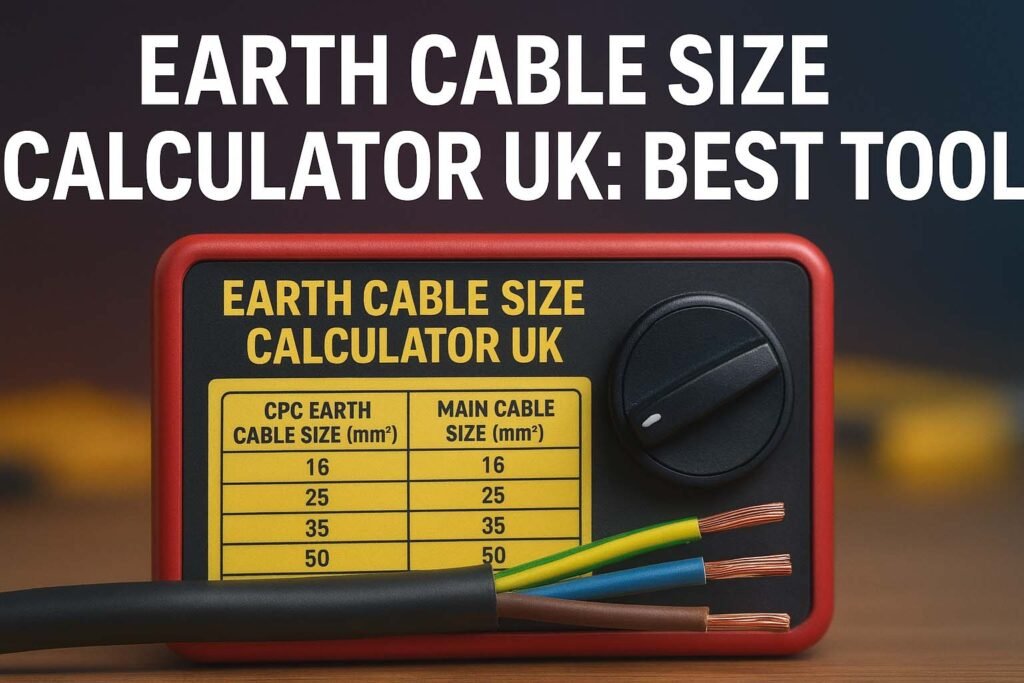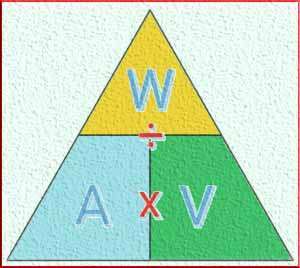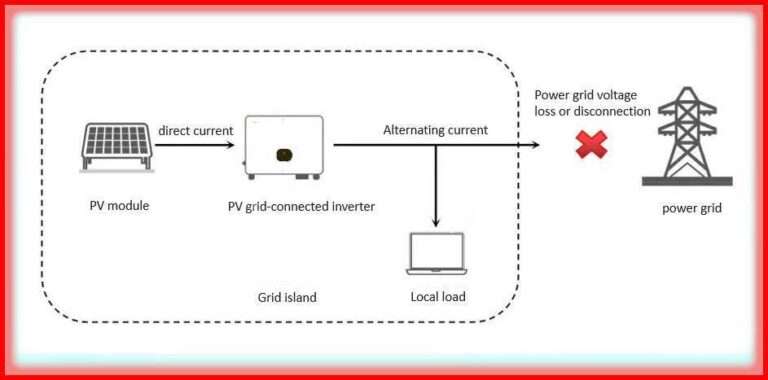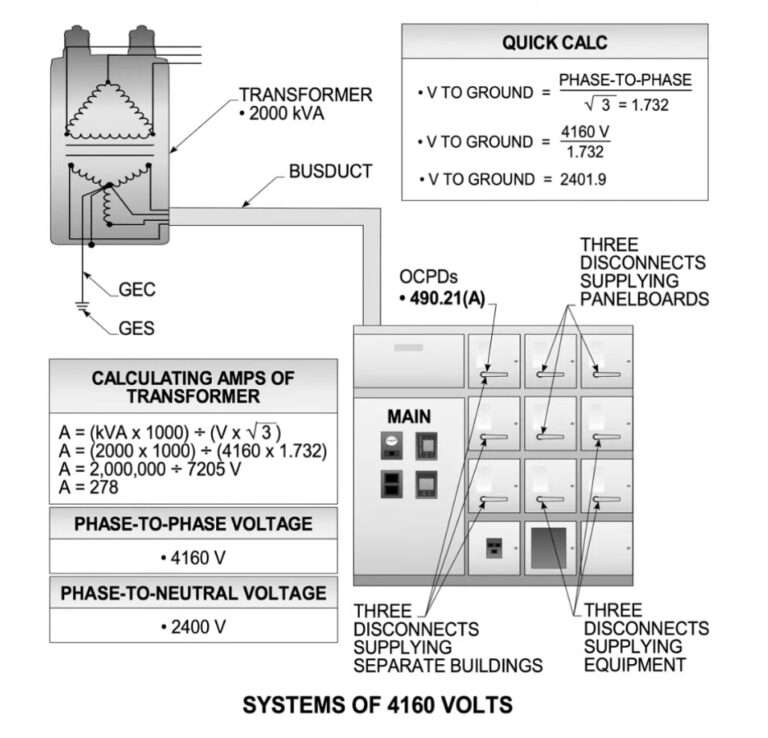Earth Cable Size Calculator UK: Best Tool
Choosing the correct earth cable size is critical for electrical safety. In the UK, this choice depends on factors like fault current, installation type, conductor material, and system voltage. An earth cable size calculator UK helps electricians, engineers, and installers select the right size with confidence. Using the right size not only ensures safety but also compliance with BS 7671 regulations. This guide explains how these calculators work, the formulas involved, and what standards apply in the UK.
Table of Contents
Table of Contents

Understanding the Earth Cable Size Calculator UK
An earth cable size calculator UK is a tool used to estimate the appropriate earthing conductor size for an electrical installation. It takes various input parameters to suggest the suitable cross-sectional area of the conductor. These calculators ensure that the earth wire can carry fault current safely during short circuits or earth faults without overheating or failing.
They are based on BS 7671 (IET Wiring Regulations), IEC standards, and engineering principles.
Know more about IEC Standard for Battery Charger
Why Earth Cable Sizing Is Critical in the UK
In the UK, the earthing system is part of the mandatory safety framework. Choosing the wrong size can result in:
- Overheating of cables
- Fire hazards
- Poor fault clearance time
- Non-compliance with UK wiring regulations
An accurate earth cable size calculator UK avoids all of these issues. It ensures that the protective conductor is capable of withstanding thermal and mechanical stresses.
Inputs Required in Earth Cable Size Calculator UK
When using an earth cable size calculator UK, you’ll typically need to input:
- System voltage (e.g., 230V or 400V)
- Type of earthing (TN-S, TN-C-S, TT)
- Fault current (in kA)
- Fault duration (in seconds)
- Conductor material (Copper or Aluminium)
- Installation method and insulation type
The calculator then applies a formula to determine the minimum cross-sectional area of the earth conductor.
Earthing Cable Size Calculation Formula
The Earthing Cable Size Calculation Formula used is based on the adiabatic equation:

Where:
S = cross-sectional area (mm²)
I = fault current (A)
t = fault duration (s)
k = constant based on conductor material and insulation
This formula is critical in both manual and automated earth cable size calculator UK tools.
Know more about Top Electrical Engineering Software
Typical K Values for Different Materials (as per IEC 60364-5-54)
| Material | Initial Temp (°C) | Final Temp (°C) | K Value (A·s½/mm²) |
|---|---|---|---|
| Copper (bare) | 30 | 250 | 226 |
| Copper (insulated) | 90 | 250 | 143 |
| Aluminium (bare) | 30 | 250 | 148 |
| Aluminium (insulated) | 90 | 250 | 94 |
| Steel | 30 | 250 | 50 |
Earthing Cable Size Standard in the UK
In the UK, the Earthing Cable Size Standard is governed by BS 7671. The minimum size is usually:
- 2.5 mm² (if protected against mechanical damage)
- 4 mm² (if not protected)
This varies depending on installation type and earthing system.
Below is a reference table for minimum earthing conductor sizes based on the live conductor:
| Live Conductor Size (mm²) | Minimum Earth Conductor (mm²) |
|---|---|
| Up to 16 | Same as live conductor |
| 16 – 35 | 16 mm² |
| Above 35 | Half of live conductor size |
These are general guidelines, and final sizing should still be confirmed using an earth cable size calculator UK.
Use our online tool Short Circuit Current Calculator
Earthing Cable Size as Per IEC Standards
IEC 60364 also provides guidance. According to Earthing Cable Size as Per IEC, the same adiabatic equation is applied with material-specific constants. For aluminium, k = 76, and for copper, k = 115 (PVC insulation).
IEC standards often supplement BS standards, especially for international projects or installations in commercial buildings.
Size of Earth Wire for Domestic Wiring in SWG
In older installations, SWG (Standard Wire Gauge) was used. In modern UK practice, we use mm². However, for Size of Earth Wire for Domestic Wiring in SWG, here’s a conversion example:
| SWG | mm² (approx) | Use Case |
|---|---|---|
| 14 | 2.0 mm² | Lighting circuits |
| 12 | 3.3 mm² | Small power outlets |
| 10 | 5.3 mm² | Cooker, heavy loads |
You can use a Wire Gauge Conversion Calculator to switch between SWG and mm².
Factors That Affect Earth Cable Sizing
The size of an earth cable is influenced by many practical and regulatory factors:
- Type of earthing system: TN-C-S systems may require larger earth conductors.
- Length of cable run: Longer runs may require larger sizes due to resistance.
- Material: Copper conducts better than aluminium, so copper cables can be smaller.
- Installation method: Enclosed installations may need derating of cable size.
- Temperature: Higher ambient temperature reduces current-carrying capacity.
All these variables are built into most earth cable size calculator UK tools.
Use our online tool Wire Size Calculator for Subpanels and Feeders – NEC Guidelines Included
Using Cable Size for Motor Calculator to Support Earth Sizing
Sometimes, earth cable sizing is done in tandem with phase conductor sizing. The Cable Size for Motor Calculator helps determine phase conductors, and the earth is sized in proportion.
For example, for a 3-phase motor, if the phase conductor is 25 mm², the earth might be 16 mm² or 10 mm² depending on protection methods.
This approach aligns the results of the Cable Size for Motor Calculator with earth cable sizing requirements.
Key Benefits of Earth Cable Size Calculator UK
Using a digital earth cable size calculator UK gives several benefits:
- Accuracy based on BS and IEC standards
- Saves time on manual calculation
- Adapts to copper or aluminium cables
- Handles various earthing configurations
- Useful for both domestic and industrial wiring
Many UK-based calculators also allow for easy Wire Gauge Conversion Calculator inputs and SWG outputs.
How to Select the Right Earth Cable in Practice
Once the earth cable size calculator UK gives you a result, you round up to the next standard size. Check for availability in the UK market. Copper cables are preferred due to better conductivity and mechanical strength.
Also ensure compatibility with protective devices like circuit breakers or fuses. An oversized earth wire is better than an undersized one, especially in critical installations.
Summary Table for Earth Cable Size Selection
| Fault Current (A) | Fault Duration (s) | Material | Resulting Min Size (mm²) |
|---|---|---|---|
| 3000 | 0.2 | Copper | 10 mm² |
| 4000 | 0.3 | Copper | 16 mm² |
| 5000 | 0.4 | Copper | 25 mm² |
| 6000 | 0.5 | Copper | 35 mm² |
These values are approximate and should always be verified using a certified earth cable size calculator UK.
Use our online tool What Gauge Wire Do I Need? Free Online Calculator for Electricians & Homeowners
Final Thoughts on Earth Cable Size Calculator UK
Electrical safety starts with correct sizing. Whether you’re designing domestic wiring or a commercial installation, the earth cable size calculator UK is an essential tool. It ensures safety, legal compliance, and performance under fault conditions. Make sure to consider Earthing Cable Size Standard, follow the Earthing Cable Size Calculation Formula, and double-check against Earthing Cable Size as Per IEC.
For legacy systems or where imperial units are referenced, always confirm using a Wire Gauge Conversion Calculator. When working with motors, use a Cable Size for Motor Calculator alongside the earth sizing method.
Follow Us on Social:
Subscribe our Newsletter on Electrical Insights for latest updates from Electrical Engineering Hub
#EarthCableSize, #CableSizeCalculator, #ElectricalWiringUK, #UKCableStandards, #EarthingCalculator, #BS7671, #ElectricalSafety, #GroundingCableSize, #CableSizingUK, #EarthingConductor, #ElectricalEngineering, #UKElectricians, #EarthWireCalculator, #CableInstallationUK, #ElectricianTools





